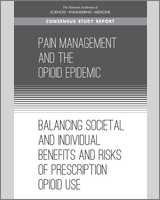From: 4, Trends in Opioid Use, Harms, and Treatment

NCBI Bookshelf. A service of the National Library of Medicine, National Institutes of Health.
Buprenorphine-naloxone (Suboxone) is an effective treatment for opioid use disorder (OUD). Accessing the drug, however, has proven problematic. For example, a 2003 survey revealed that 31 percent of 814 private health plans did not cover it. Of those that did, 80 percent placed it in tier three of their formulary, requiring the highest level of patient copayment. One reason for this was the drug's high price, set initially by Reckitt Benckiser at almost $300 per month.
In addition, using a combination of tactics, Reckitt kept the price of buprenorphine-naloxone artificially high over time by forestalling generic competition. First, as the end of market exclusivity approached for the original tablet formulation, the company introduced a sublingual film version of the drug. Following the U.S. Food and Drug Administration's (FDA's) approval of this modified formulation in 2010, Reckitt ceased producing the tablets. With Abbreviated New Drug Applications (ANDAs) for generic buprenorphine-naloxone tablets pending before the FDA, Reckitt then submitted a Citizen Petition requesting that the agency reject such products, claiming that tablets were less safe than film. The FDA denied the petition 5 months later but was forced to delay its approval of the ANDAs over this time.
Finally, Reckitt capitalized on a relatively new FDA post-market safety program: Risk Evaluation and Mitigation Strategies (REMS). Possible REMS components include medication guides for patients; communication plans for physicians; and—for drugs raising the most serious safety concerns—elements to assure safe use (ETASU), such as mandatory prescriber or pharmacy certification and patient follow-up testing. Brand-name and generic manufacturers of a drug must generally use a shared ETASU REMS. However, in the case of the ETASU REMS for buprenorphine-naloxone, Reckitt refused to cooperate on a shared system. As alleged in a complaint filed by 37 states in 2016, Reckitt “merely feigned cooperation with the shared REMS development process and used deceptive tactics for months to hide its true intent, which was to delay the generic industry from obtaining” approvals.
These strategies effectively forestalled generic competition for several years, keeping the drug's price artificially elevated and reducing access to this OUD treatment.
SOURCE: Sarpatwari et al., 2017.
From: 4, Trends in Opioid Use, Harms, and Treatment

NCBI Bookshelf. A service of the National Library of Medicine, National Institutes of Health.